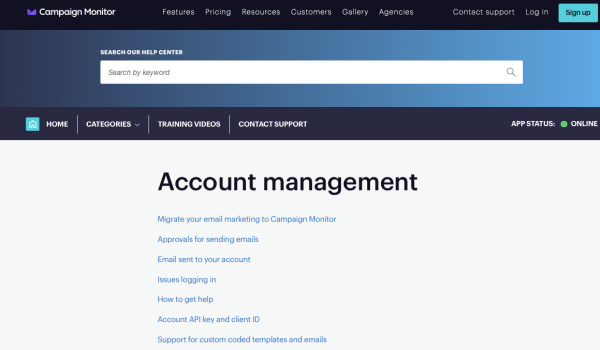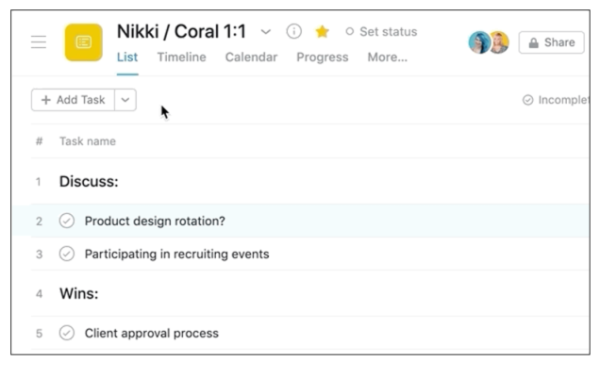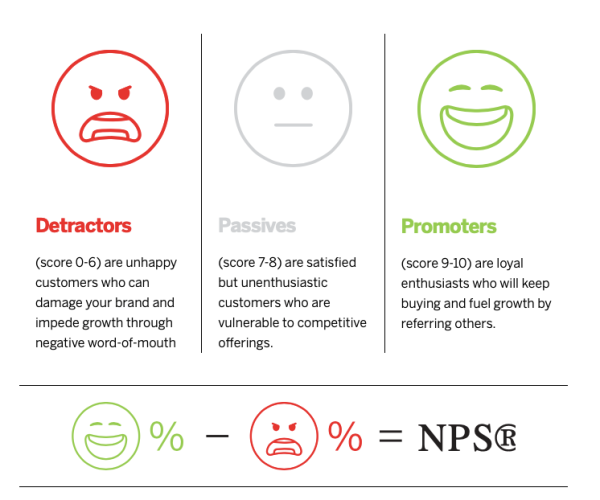Image Source: Unsplash
Today, all businesses function in a highly customer-driven environment. A plethora of choices within almost every sector has promoted them to fight for customer attention.
Moreover, it is not just products/services or pricing that they must compete with, but also customer service - more than two-thirds of companies already compete mostly based on that.
Given how one-third of customers consider switching brands after a single instance of subpar customer service, it is not surprising to see companies in the U.S. losing $62 billion a year.
So, yes, improving your customer service can help your small business grow steadily with a loyal customer base in tow. In this article, we analyze five essential customer service tips to follow:
1. Use customer service software
It is true you can’t provide excellent customer service without competent and empathetic staff. But that is not all: you also need to use the right technology. That is where customer service software enters the picture.
When businesses deploy such software, they intend to store customer information and streamline sales pipelines. But these tools can do so much more! By utilizing add-ons and extensions, you can easily set up processes on the platform to improve customer communication.
Since customers can contact you through various channels such as phone, email, social media, and website, a customer service software captures all the conversations over some time to gain a “single customer view.”
Leverage that along with the data on their past activities and purchases to give them a unique experience by knowing exactly what the issue is without asking them to repeat themselves, whenever they contact you on any channel.
Customer service software will ensure no inquiry is lost, as each request gets logged into a centralized online system accessible in real time. You can also improve the response time by using ready-made email templates that answer frequently asked customer questions.
By enabling efficient communication, you will notice how quickly the customer perception of your small business starts improving.
2. Be available on multiple channels
Your customers could land on your website, initiate a conversation via live chat, submit details for a callback on the Contact Us page, or directly ring the call center. They could also DM you on social media or email you.
The most significant advantage of being available on multiple channels is your customers have options for how they would like to communicate with you regarding a query or complaint. But that does not stop here.
Eighty percent of U.S. customers believe convenience, friendly service, knowledgeable help and speed are critical customer experience elements.
Therefore, deploy a CRM such as Keap to track, streamline, and answer all inquiries at the earliest convenience no matter where they come from - website, social media, chat, email, or phone.
When customers share details with your support team on Twitter, they should be able to continue it over a phone call without having to repeat themselves. Proper systems will ensure your support staff is aware of their history and equipped to offer a prompt solution.
The ability to pick up the conversation from where it was left off in the previous touchpoints lead to a higher Customer LifeTime Value (CLTV).
3. Enable self-service for your customers
According to an American Express survey, more than 60% of U.S. customers prefer using a digital self-serve tool such as online chat or knowledge base for simple inquiries. This is not surprising since three-quarters of customers first search for answers online themselves via a how-to video or an FAQ article before reaching out to the support team.
So, when you decide to build a knowledge base, identify the top reasons customers contact your support team.
For example, if you are an email marketing software company in the U.K., your customers could have numerous questions on GDPR. Or, if you are an accounting tool, they could query the scope of integration with third-party apps.
Whatever it is, your customers should be able to find answers to their questions without working too hard. Add the most popular FAQs to the self-service dashboard. CampaignMonitor has a clean, well-organized set of articles.

Click on any of the categories, and you are taken to a page comprising category-specific FAQs.

Along with textual information, insert screenshots to explain the answer visually. Asana uses GIFs to illustrate to the customers what they need to click on, how to edit settings, etc.

The whole point of having a knowledge base is to equip your customers with all the information possible in an easy-to-understand language.
4. Leverage chatbots for instant resolutions
Chatbots, unlike human beings, don’t need any sleep. If your support team is unavailable, a chatbot can step in and answer questions, i.e., provide links to specific pages, FAQs, or resources. This will ensure a prompt response to customers.
Interestingly, 54% of customers would always choose a chatbot over a human support rep if it saved them time. Since chatbots can answer 80% of standard questions about a business and its offerings in real time, it is best to utilize their prowess.
Integrate a chatbot on your website and sync it to your CRM system. Implement self-service content such as FAQs and support articles as answers to questions repeatedly asked by customers. The chatbot can redirect them to the specific page.
Intercom’s Resolution Bot takes it up a notch by pulling out relevant answers based on what the customers are typing before they even hit the enter key. The company has observed a 44% improvement in response times.
5. Track customer experience metrics
Customer service is all about customers, but numbers back it. Metrics eliminate the guesswork and give you hardcore proof on what you need to do to improve customer experience initiatives, whether through reducing response time, setting up a separate social media support team, etc.
To measure the progress at scale, your small business should track the following three metrics:
i. Net Promoter Score (NPS®)
NPS measures customer loyalty based on a single survey question: “How likely are you to recommend our business to a friend or colleague?” Ratings are between 0 (not at all likely) and 10 (extremely likely). The respondents fall into two groups - Detractors (who rate 0-6) and Promoters (who rate 9-10).

To calculate the NPS of your small business, subtract the percentage of Detractors from the percentage of Promoters. The metric is easy-to-understand, quick-to-complete, and gives a big picture of customer loyalty.
ii. Customer Satisfaction (CSAT)
Whatever you offer, you want your customers to be satisfied with it. That is the whole point of calculating CSAT. The metric gauges based on one question: “How would you rate your overall satisfaction with the product or service you received?”
Ratings are between 0 (not at all satisfied) and 5 (extremely satisfied). The two highest ratings (4 and 5) are used to calculate the percentage score. CSAT is simple to calculate and can provide rich insights.
iii. Customer Effort Score (CES)
A relatively new and less common metric, CES throws light on how easy it is for your customers to interact with your business. The metric measures based on questions like: “How easy was it to deal with our company?”
Ratings are between Easy, Difficult and Neither. To calculate the CES of your small business, subtract the percentage of Difficult from the percentage of Easy. CES’ actionable data helps you make changes to your processes quickly.
Build a rapport with your customers
A positive relationship with your customers can go a long way in ensuring their return business. Therefore, show them how much they matter to you. Take ownership of their inquiries, especially complaints, so the customer feels the problem has been “lifted from them.”
Besides being proactive about the query, personalize the interaction, address them by name and store all of their interactions in your CRM for referencing the next time you speak to them on any channel. Please don’t make your customers repeat themselves!
It is also vital to have a cheerful and upbeat demeanor while chatting with them. Avoid using phrases such as “I don’t know” or “I’m new here.” Replace them with “Let me find out for you” or “Let me consult this with my superiors and get back to you ASAP.”
The right choice of words can have a profound impact on your customers. When you show your keenness, they trust your knowledge and feel more comfortable sharing their concerns with you. Building a rapport does not have to be complicated.
About the Author
Pratik Dholakiya is the founder of Growfusely, a content marketing agency specializing in content and data-driven SEO. He shares his thoughts and knowledge in publications such as “Search Engine Land”, “Search Engine Journal”, “Entrepreneur Magazine”, “YourStory”, and “Inc42”, to name a few. He can be found on Twitter @DholakiyaPratik.


